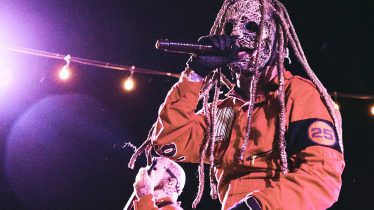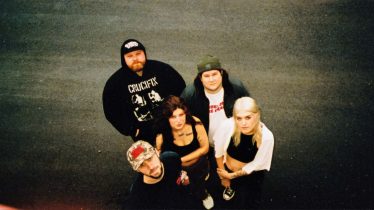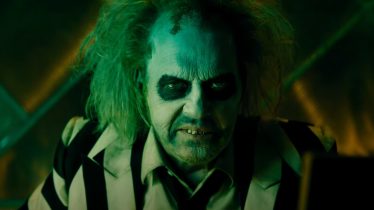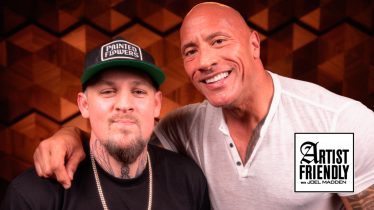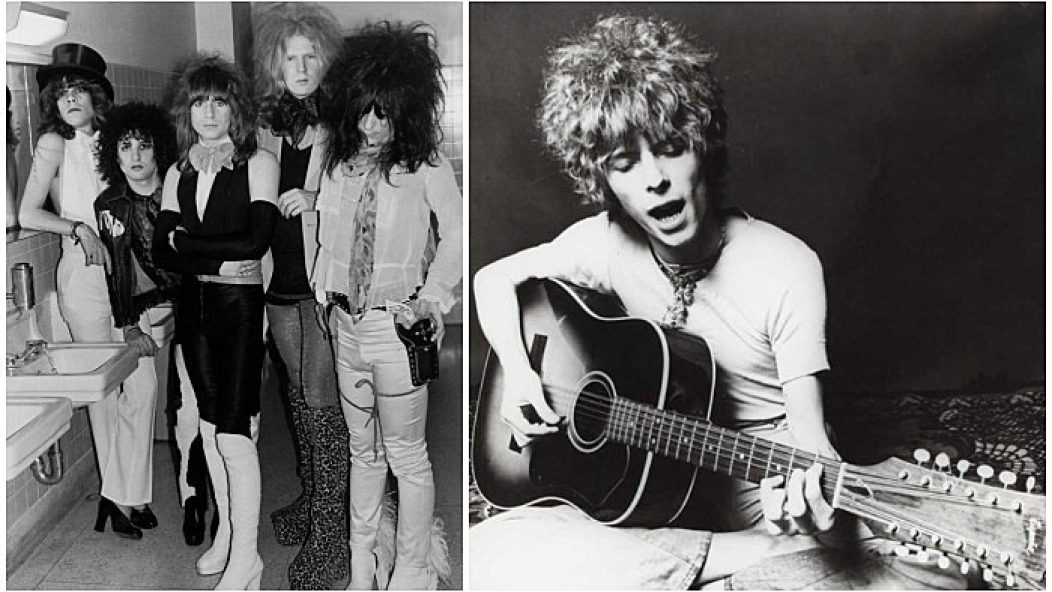
10 glam-rock artists from the 1970s who heralded the coming age of punk
Rock ‘n’ roll had, for the most part, lost its “roll” by 1970. It became rock music—self-serious, dour, pompous, filled with pretensions to being “art.” It ceased being fabulous teenage noise, filled with Chuck Berry’s playful swagger and Elvis’ hypersexualized pelvic thrust and rebel sneer. Kids wanted something loud and flashy, full of energy, something talking about the times, reflecting their frustrations and alienation from the straight world. They wanted sexy music full of loud guitars and thumping drums that confounded their parents and made them feel like kings and queens for a moment. They wanted tunes that sounded like they should be joyriding in a pink 1957 Cadillac, wearing a gold suit.
Are we talking about punk? Or glam rock?
Read more: 10 legendary bands who built the foundation of the grunge genre
It can cut both ways. Scratch any punk worth their salt and you’ll find a David Bowie fan buried in the leather jacket somewhere. And it’s well established how the New York Dolls and Iggy And The Stooges are the combined square root of punk. But the overdriven roar of Bowie guitarist Mick Ronson’s and Marc Bolan of T. Rex’s Gibson Les Pauls are definitely punk’s sonic signature—the descending power chords and commitment to the two-minute-30-second/three-chord hit single being its regulation song construction. And how many classic punk records reference Bowie’s apocalyptic “Five Years” mindset, if not cribbing it outright? Then there’s all that ambiguous sexuality.
Read more: These 17 punk guitarists from the ’70s truly forged the cutting edge
Face it: Punk is essentially post-apocalyptic glam. It’s what happens when Ziggy Stardust awakens after the previous night’s champagne-and-cocaine bender, his eyeliner smudged, his hair disheveled, his frock ripped to hell. He looks out the window, and the atomic bomb has destroyed the world. So he reassembles the togs with safety pins, sticks up his hair higher and throws on a leather jacket someone left behind. Oh, and someone broke and burned his electric guitar. He plays it anyway.
Here are 10 glam heroes looked up to by every early punk.
David Bowie
Best heard on: The Rise And Fall Of Ziggy Stardust And The Spiders From Mars
“All that glam look influenced punk,” Mansun’s Paul Draper remarked in 1998. “I’ve never met a punk who wasn’t a Bowie fan—even Johnny Rotten‘s orange hair was a throwback to Ziggy Stardust.” As was the spiky look, though punk made it more jagged and ragged. It’s equally hard to ignore how often the Ramones used “Hang On To Yourself”’s bump-n-grind Eddie Cochran riffs on such songs as “Teenage Lobotomy” or how Sid Vicious essentially played its bassline on every Pistols song from the moment he joined. This just scratches the surface on the broad shadow Bowie cast over punk.
Iggy And The Stooges
Best heard on: Raw Power
Alongside the Velvet Underground, Detroit punk architects the Stooges, especially singer Iggy Pop, were a deep wellspring of ideas that Bowie cribbed. Consider the name “Ziggy Stardust,” to start. Bowie returned the favor, enabling Pop to reform the Stooges on English soil. Closely observing England’s glam explosion, Pop dunked his face in a vat of cosmetics and dyed his shag the whitest shade of platinum Clairol produced. Meanwhile, guitarist James Williamson and the Asheton brothers Ron (bass) and Scott (drums) fine-tuned their music to a hysterical shriek that sounded like amphetamine glam on the Bowie-mixed Raw Power, one of punk’s sacred texts.
New York Dolls
Best heard on: New York Dolls
Both New York Dolls’ self-titled and Too Much Too Soon albums comprise punk’s other Dead Sea Scrolls. Essentially the last ’60s garage band retrofitted to ’70s specs, the Dolls brought to rock ‘n’ roll the Warholian notion that you could be a star if you simply said you were, whether the world thought you were talented or not. The exact people who needed this message heard it, forming misfit teenage garage bands of their own. They followed the Dolls’ example of compressing the Rolling Stones’ “Have You Seen Your Mother, Baby, Standing In The Shadow?” into a more frantic squall, then dressing it in the “Jumpin’ Jack Flash” video’s androgyny. Johnny Thunders’ overamped power chords and teeth-grinding Chuck Berryisms became punk’s signature guitar move.
T. Rex
Best heard on: Electric Warrior
Bolan—who, for all intents and purposes, was T. Rex—invented British glam by promoting 1971 single “Hot Love” on Top Of The Pops, all kohl-rimmed eyes and glittering cheekbones. English rock became androgynous, two years before his friend Bowie unleashed Ziggy Stardust. Kids like Ray Burns—a toilet cleaner away years from becoming Captain Sensible—saw the effect of T. Rex’s Marshall-stacked rockabilly and noted its simplicity. Bolan recognized punk’s T. Rexian spirit, featuring bands such as Generation X on his 1977 Marc TV series and bringing openers the Damned on his final U.K. tour before his September car crash.
Mott The Hoople
Best heard on: Mott
Mott The Hoople were a workmanlike rock ‘n’ roll outfit with a deadly cult and tons of energy, and little else to show for it. Bowie got word that they were verging on breaking up and urged reconsideration. He hastily wrote the ultimate anthem to glam’s youthful outsiderism, “All The Young Dudes,” then rushed them into a studio. It saved their career, making them enormous stars who looked like bricklayers in makeup and platform boots. Mott then crafted their own self-mythologizing anthems with big choruses. This provided enormous inspiration to future U.K. punk stars such as Generation X and the Clash, who mimicked those anthems, alongside Mick Ralphs’ tight, economical guitar blasts.
Roxy Music
Best heard on: Roxy Music
For their first two LPs, Roxy Music performed a take on rock ‘n’ roll as trashy and fun as the New York Dolls’. It’s in the details—the dissonance and off-center instrumentation, especially Brian Eno’s untutored synthesizer seasoning and Andy MacKay’s cocktail-jazz-meets-free-jazz saxophone—that their art school backgrounds became apparent. Roxy’s archness, as well as Eno’s on-the-job-training approach to being their resident electronics whiz, proved quite influential upon the budding punks. Paul Thompson’s tight, thumping drums were a major inspiration on the Sex Pistols’ Paul Cook. The Pistols also chose Chris Thomas to produce their records based on his work on Roxy’s For Your Pleasure.
Slade
Best heard on: Cum On Feel The Hitz: The Best Of Slade
Initially presented to the world as the first skinhead band, Slade soon shifted gears into glam rock, launching a string of deliciously catchy U.K. hits with hilariously misspelled titles like “Cum On Feel The Noize.” But despite looking like a quartet of construction workers in shiny suits and stacked heels, they reduced rock ‘n’ roll to a crude working-class stomp, filled with gloriously loud guitars and topped by Noddy Holder’s Little Richard-esque screech. It’s easy to see how not only the most proletarian of punk bands—from the Pistols to Cockney Rejects—loved Slade but AC/DC as well.
Sweet
Best heard on: Desolation Boulevard
Though their first hits under the aegis of songwriters/producers team Nicky Chinn and Mike Chapman were bubblegum confections like “Funny, Funny,” Sweet’s four members really wanted to be in Deep Purple. They pushed the needle further and further into Who-influenced, basic hard-rock anthems such as “Ballroom Blitz”—about a dancehall riot—and “Teenage Rampage,” urging youthful revolution. They also had a penchant for fashions more outrageous than such other teen glam sensations of the day as Gary Glitter. Bassist Steve Priest especially pushed the envelope—he was dissuaded by TOTP’s producers from promoting “Ballroom Blitz” in a leather jacket with “FUCK YOU!” studded across the back. How punk is that?
Alice Cooper
Best heard on: Alice Cooper’s Greatest Hits
Initially part of Frank Zappa’s Straight Records stable of oddballs, the quintet that originally comprised Alice Cooper (before the name came to connote lead singer Vince Furnier’s stage persona) moved to the Detroit area, absorbing the proto-punk of the Stooges and MC5. They transformed into an American glam act, borrowing heavily from the Cockettes’ idea of drag theatricality, with a penchant for B-movie horror films and Budweiser. It would be Cooper’s debut hit, the teenage angst clarion call “I’m Eighteen,” that would be Johnny Rotten’s lip-sync audition soundtrack for the Sex Pistols. The attitude of other Cooper classics such as “School’s Out” (“We can’t salute you, can’t find a flag/If that don’t suit you, that’s a drag”) was a clear punk signpost.
Hollywood Brats
Best heard on: Hollywood Brats
Singer Andrew Matheson spent one-fourth of his hilarious memoir Sick On You: The Disastrous Story of Britain’s Great Lost Punk Band haughtily dismissing the Hollywood Brats’ reputation as “the English New York Dolls.” He protested a bit too much. Both bands seemingly formed concurrently, with a similar loud, distorted, irreverent mashup of the Stones and ’60s girl groups, dressing it in thrift store women’s department finery and black leather. The Brats’ posthumously released self-titled album is filled with snotty hymns like “Chez Maximes,” while Matheson and keyboardist Casino Steel were asked to join London SS, the band that spawned the Clash, Generation X and the Damned. Steel would take Brats classics such as “Sick On You” to the Boys. Watch them tackle their classic “Tumble With Me” at their first gig in 45 years above!
